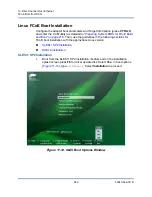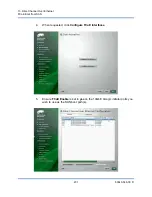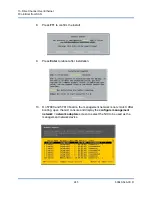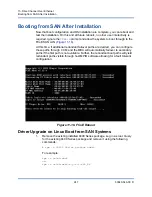
11–Fibre Channel Over Ethernet
FCoE Boot from SAN
240
83840-546-00 D
Linux: Adding Additional Boot Paths
Both RHEL and SLES require updates to the network configuration when adding
new boot through an FCoE initiator that was not configured during installation.
The following sections describe this procedure for each supported operating
system.
RHEL6.2 and Above
On RHEL6.2 and above, if the system is configured to boot through an initiator
port that has not previously been configured in the OS, the system automatically
boots successfully, but will encounter problems during shutdown. All new boot
path initiator ports must be configured in the OS before updating pre-boot FCoE
boot parameters.
1.
Identify the network interface names for the newly added interfaces through
ifconfig -a
.
2.
Edit
/boot/grub/menu.lst
.
Add
ifname=
<INTERFACE>
:
<MAC_ADDRESS>
to the line
kernel
/vmlinuz …
for each new interface. The MAC address must be all lower
case and separated by a colon. (
ifname=em1:00:00:00:00:00:00
)
3.
Create a
/etc/fcoe/cfg-
<INTERFACE>
file for each new FCoE initiator
by duplicating the
/etc/fcoe/cfg-
<INTERFACE>
file that was already
configured during initial installation.
4.
Execute
nm-connection-editor
.
a.
Open
Network Connection
and choose each new interface.
b.
Configure each interface as desired, including DHCP settings.
c.
Click
Apply
to save.
5.
For each new interface, edit
/etc/sysconfig/network-scripts/ifcfg-
<INTERFACE>
to add the
line
NM_CONTROLLED="no"
. Modifying these files automatically causes a
restart to the network service. This may cause the system to appear to hang
briefly. It is best to ensure that redundant multipath paths are available
before performing this operation.






























